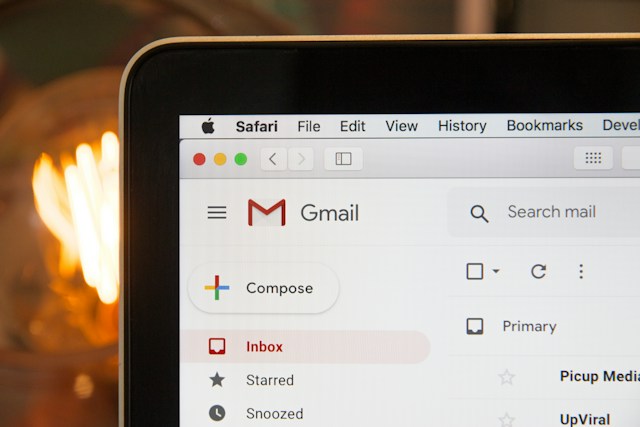Why Bother with Email Marketing?

Tanel Vetik
Head of strategy
Email marketing is a very personalized way of communicating with your audience – you’re essentially having a chat face to face. While your social media following may be diverse, email marketing gives you a precise overview of who has registered and entrusted you with their valuable information.
Treat those customer emails as a key asset of your business, as the potential value that can be derived from them is powerful. Contacts turn into contracts. And contracts mean revenue. Even though they provided you with their email address voluntarily after reaching out or completing a purchase, don’t take this for granted. All email addresses are special and have potential to become return purchases (or fist time clients, depending on how you acquired those contacts).

While social media requires spending money and regularly posting content to reach a targeted audience, email marketing must focus purely on delivering as much value as possible. Preferably in an easy to consume format.
According to a 2021 HubSpot blog study, the most effective email marketing strategies are email list segmentation (78%), email personalization (72%), and email automation (71%). The age of sending out mass-posts to a list purchased online is long past. Doing this today would devastate your domain authority and make sure all your future emails end up in “Spam” folders.
Why Bother with Email Marketing?

Tanel Vetik
Head of strategy
Email marketing is a very personalized way of communicating with your audience – you’re essentially having a chat face to face. While your social media following may be diverse, email marketing gives you a precise overview of who has registered and entrusted you with their valuable information.
Treat those customer emails as a key asset of your business, as the potential value that can be derived from them is powerful. Contacts turn into contracts. And contracts mean revenue. Even though they provided you with their email address voluntarily after reaching out or completing a purchase, don’t take this for granted. All email addresses are special and have potential to become return purchases (or fist time clients, depending on how you acquired those contacts).

Email marketing is a very personalized way of communicating with your audience – you’re essentially having a chat face to face. While your social media following may be diverse, email marketing gives you a precise overview of who has registered and entrusted you with their valuable information.
Treat those customer emails as a key asset of your business, as the potential value that can be derived from them is powerful. Contacts turn into contracts. And contracts mean revenue. Even though they provided you with their email address voluntarily after reaching out or completing a purchase, don’t take this for granted. All email addresses are special and have potential to become return purchases (or fist time clients, depending on how you acquired those contacts).

While social media requires spending money and regularly posting content to reach a targeted audience, email marketing must focus purely on delivering as much value as possible. Preferably in an easy to consume format.
According to a 2021 HubSpot blog study, the most effective email marketing strategies are email list segmentation (78%), email personalization (72%), and email automation (71%). The age of sending out mass-posts to a list purchased online is long past. Doing this today would devastate your domain authority and make sure all your future emails end up in “Spam” folders.
What is email automation?
It’s all about sending the right type of email to the right contacts at the most optimal time. It’s incredibly difficult to do this manually at scale. But carefully created email automation funnels deliver 3-5x better results than a traditional newsletter would on average.
The only downside to this is that you need to do a fair bit of prep work before you can start up the engine. It’s one thing to write the emails in advance (you can probably get away with writing the first 3-5 and finishing the remining ones after your automation has already started), but the bulk of the work is hidden in customer segmentation.
Making sure the right people get the right type of email is key. To get this right, you need to work within your email management program (it can be Mailchimp, Klaviyo, Smaily, or any of the other smaller ones). Assign custom labels for each contact to segment them based on interest, purchase behaviour, demographic data, etc.
Next, assign labels for key engagement points to make sure your contacts are dynamically assigned to each group. People’s interest ted to change over time and you want to make sure your email automation keeps up with it.
Once ready, start your automation, sit back, and relax. These automation work 24/7 and do this all year round. On average, 33% of marketers send emails once per week, and 26% send emails just a few times per month. We recommend sending emails at least every other week and make sure those emails are relevant, offer unique value, and are easy to read/understand.
Why use email marketing?
In most cases, email marketing is used for:
- conveying brand image and brand values,
- recruitment purposes,
- providing important information either internally or externally,
- new product launches,
- content marketing and event marketing,
- seasonal sales campaigns,
- B2B prospecting and lead generation,
Naturally, this list is at least a mile long, but the above make up about 80% of all email campaigns. In truth there are unlimited possibilities with email marketing. From internal training to customer relations and market research.
Well executed email communications can take hours off someone’s workload, make the business a lot leaner, and increase the speed at which you do your sales/customer acquisition. You can even link your email management platform with your preferred CMR (such as HubSpot or Pipedrive) and automate your entire post-purchase client service process.
50% of people report they buy products or services at least once a month, after engaging with an email from that brand or business. Moreover, 59% acknowledge that email sales have influenced their purchasing decisions.
Converting potential customers into paying customers
If a potential customer walks into your store or visits your website, they might be ready to buy immediately, but they also might not. On average, 2-3% of your target audience are ready to buy right away. The remaining 97-98% need to be wooed. They don’t trust you one bit.
Marketing must take those 98% and turn at least some of them into buying customers. If an engaging, value-packed newsletter or problem-solving email cycle can turn at least 6% of those leaving into potential customers, then it would mean a 2-3x increase in total business revenue.
Then, once they’ve subscribed to your newsletter, you must maintain contact, earn their trust, and you will convert at least 3% or 4% of them into paying customers. This means you’ve increased your client base from 2% to 4% of market share, thereby boosting your profit significantly. All the while having an automated email robot do the heavy lifting.
Doing email marketing as a beginner
Start by getting to know your customers. Who is that ideal newsletter subscriber who will eventually want to purchase your stuff? Why would they want to join your newsletter? Have they already purchased your product/service? If you have UX/UI data measurement tools installed on your website (such as Hotjar) then you can research user behaviour and map out interest points/struggles.
If you don’t have any such tools installed, then I recommend reaching out to some of your previous clients and have a chat. You can’t profitably grow the business without knowing your customers. You have to know their main struggles, what sort of solutions they are looking for, why they chose you out of the many other alternatives, etc.
Now segment your email list based on this data. You want to A/B test those hypotheses first, to make sure you can rely on this data in the future. Don’t just send the same email to everyone. Some people may even want you to only send 1 email per month, whereas others prefer weekly communication.
The better you know your customer and their habits, the more accurate your segmentation will be, and the better you can cater to the needs of each audience group. Segmentation is the foundation of successful email marketing.
Getting to know what’s relevant for your audience and what’s rubbish
If someone has just added themselves to your email list, the likelihood that they will read the first email is quite high. How do you maintain this percentage with subsequent emails? Don’t just use newsletters for sales. Educate and raise awareness through emails. Explain the usefulness of your product/service to the client you are writing to, not just because it’s cool and good and useful. Show and explain how it improves your client’s life.
Email automation is an ideal way to build customer relationships, create trust, offer value, direct the client to your website, thereby increasing traffic both on the website and on social media channels, which in turn is a potential revenue booster.
If you think automation, as it sounds, is a cold and off-putting marketing method, it’s actually the opposite. To implement email automation requires thorough preliminary work. Know your client, think through the sales funnel or pipeline, and create a plan to move the client from point A, where they are now, to point B, where you want them to be.
Email marketing brings immediate visible results
If you already have an effective customer database, and have sent out your newsletters and offers, be ready for a sharp increase in profits. Marketing to existing or former customers is 10 times easier than bringing strangers through the front door. If you don’t yet have a client base, don’t worry, it’s never too late, and we can help you get started with email marketing.
Increase customer lifetime value
If your average customer brings in about 3000£ per month, but doesn’t buy your products over the Summer months, then building a sales funnel to introduce relevant alterative offerings at the right time could easily increase lifetime value from £27K to £30-32K. This would mean an additional €5k per customer, every year. With a fully automated sales funnel.
Oe of the most common such automations is the abandoned shopping cart email you get at ecommerce stores. It’s not unusual for an online business to get up to 25% of their annual revenue from this very email automation.
Create loyal customers and have a dialogue
A newsletter or a thoroughly thought-out email campaign is the best way to create trust in customers towards you. You are personal, the client communicates with you, and you become their trusted industry specialist. Someone they turn to when they want your product/service instead of turning to your competitors.
People prefer simpler solutions. Having to change a long-term business partner is a nuisance. But most businesses do this at least once per year. The main reason behind this is that they don’t feel like they’re getting value for their money. It’s often not even because the business doesn’t do the work – they just don’t communicate it efficiently. Automating such communication could easily increase client retention.
